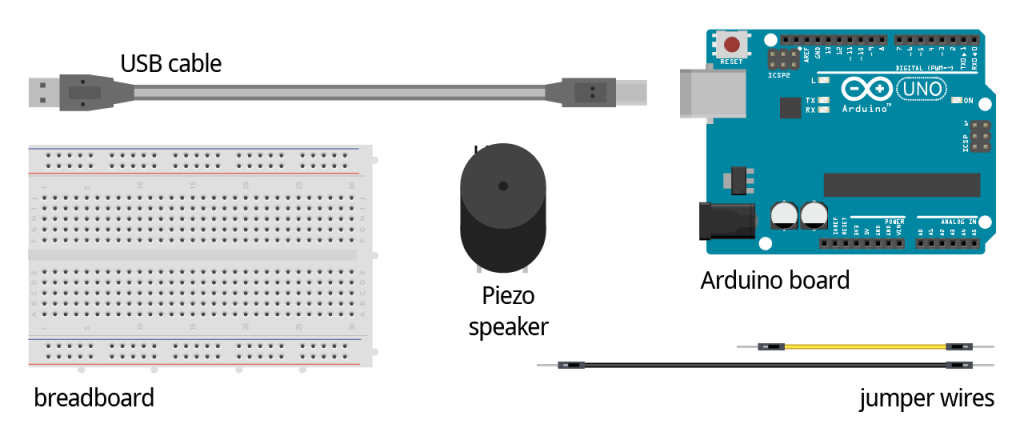

We have the pitches.h header file to play any note value, now we should find out its specific note duration to play it. The three main factors required to play a theme are To play a decent melody using Arduino we should know what constitutes these melodies.
#Arduino piezo speaker power code
If you are someone familiar with sheet music you should be able to make some sense of this table, for others like me these are just another block of code.Ībove code is given in pitches.h header file in this zip file, you just need to download and include this file in our Arduino code as given at the end this tutorial or use the code given in the zip file. We will use this note table to play our themes. This note table was originally written by Brett Hagman, on whose work the tone() command was based. But, how do we know what kind of tone will be generated for each frequency?Īrduino have given us a note table which equates each frequency to a specific musical note type.

#Arduino piezo speaker power how to
Now, we know how to produce some noise using the arduino tone() function. However we humans can hear only frequencies between 2000Hz and 5000 Hz. For UNO and most other common boards the minimum frequency that can be produced is 31Hz and the maximum frequency that can be produced is 65535Hz. The frequency that can be generated depends on the size of the timer in your Arduino board. The values of pin can be any of your digital pin.

Pin: the pin on which to generate the toneįrequency: the frequency of the tone in hertz - unsigned intĭuration: the duration of the tone in milliseconds (optional) - unsigned long

The time duration can also be mentioned if required. The tone () can generate a particular frequency on a specific pin. Okay, so how do we get a variable frequency from Arduino? This is where the tone () function comes in. Hence the tone and pitch can be controlled by varying the frequency of the current. Hence in order to make the Piezo buzzer to make some noise we have to make the Piezo electric crystal to vibrate, the pitch and tone of noise depends on how fast the crystal vibrates. Here we apply a variable current (frequency) for which the crystal vibrates thus producing sound. We might have learnt about Piezo crystals in our school, it is nothing but a crystal which converts mechanical vibrations into electricity or vice versa. Understanding the Tone() function of Arduino:īefore we can understand how a tone () works we should know how a Piezo buzzer works.


 0 kommentar(er)
0 kommentar(er)
